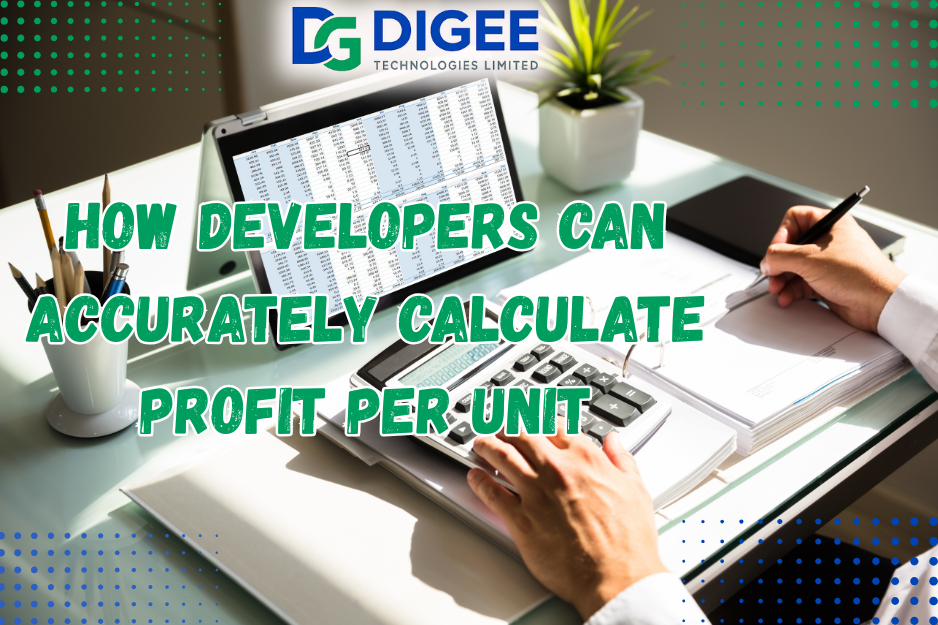Knowing the profit per unit is one of the most important financial metrics for any real estate developer. Without accurate unit costing, developers cannot set the right selling price, measure performance, plan future projects or understand where money is being lost.
Manual calculations using Excel or notebooks often lead to errors because materials, labour and approvals change daily. The only reliable way to calculate profit per unit is to use modern tools such as real estate development software, property development software, residential development software, residential land development software, real estate development project management software, software for real estate developers and full ERP for real estate developers.
Here is how developers can calculate profit per unit accurately and confidently.
1. Track all material costs per unit
Materials make up the largest cost in construction.
Real estate development software links every material issued to a specific unit, showing:
Cement used
Steel used
Timber used
Tiles used
Plumbing materials
Electrical materials
This gives the exact cost of materials per unit instead of estimates.
2. Use FIFO to calculate the real material cost
FIFO is the most accurate costing method because it uses the real price of the first batch received.
With property development software, FIFO costing is applied automatically so each unit is charged the true cost of materials used.
This prevents inflated or underestimated unit costing.
3. Track labour costs per phase and per unit
Labour is often one of the most difficult costs to control.
Residential development software records:
Daily attendance
Work done
Labour categories
Payments
Phase allocation
This shows exactly how much labour each unit consumed.
4. Include overheads and indirect costs
Real estate projects have indirect costs such as:
Supervision
Transport
Security
Water and electricity
Site administration
With ERP for real estate developers, these overheads can be allocated proportionally to each unit.
This ensures the profit calculation includes all real costs.
5. Track procurement costs with digital approval
Procurement mistakes and overpricing affect unit profit.
Residential land development software compares supplier quotations and prevents overvalued purchases.
This keeps project costs accurate and reduces inflated unit expenses.
6. Include finance and borrowing costs
Interest on loans and project financing must be considered.
Using software for real estate developers, developers can calculate financing costs and distribute them across all units.
This gives the true financial picture.
7. Capture variation orders and unexpected costs
Some units need extra tiles, more paint or additional fittings depending on client needs or project changes.
Real estate development project management software records variations instantly and updates unit costing.
This keeps unit profit accurate.
8. Use real time dashboards for cost monitoring
Dashboards inside the best software for real estate developers show:
Total cost per unit
Budget versus actual
Upcoming expenses
Cost variances
Developers no longer need to guess or wait for monthly reports.
9. Compare cost per unit with selling price
Once the total cost per unit is known, calculating profit becomes simple.
Profit per unit is:
Selling price
minus
Total unit cost
Using real estate development software, this calculation is done automatically and updated daily.
10. Use CRM data to include marketing and sales costs
Marketing, commissions and customer management also affect unit profitability.
The best CRM for real estate developers tracks:
Customer acquisition costs
Sales commissions
Admin fees
After sales costs
Developers can easily include these in the final profit calculation.
Conclusion
Accurately calculating profit per unit requires complete visibility of material usage, labour, procurement, overheads, variations and sales costs. Digital tools such as real estate development software, property development software, residential development software, residential land development software, software for real estate developers, real estate development project management software and full ERP for real estate developers make this easy by tracking every cost in real time. Combined with the best CRM for real estate developers, developers gain a full picture of true profitability for every unit.
Digee Technologies provides some of the best software for real estate developers, designed to calculate accurate profit per unit and improve project financial performance.




